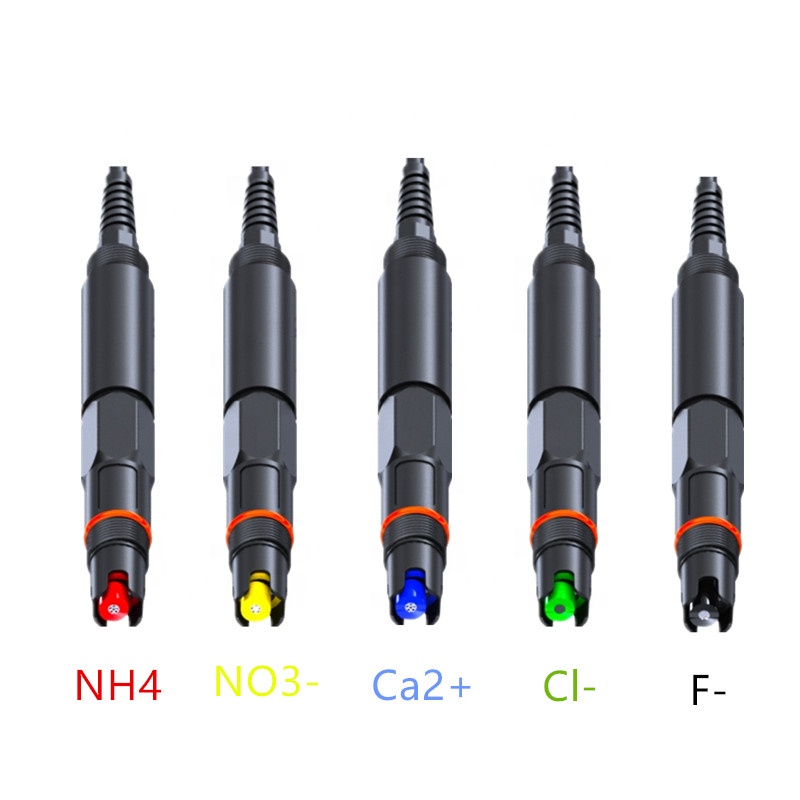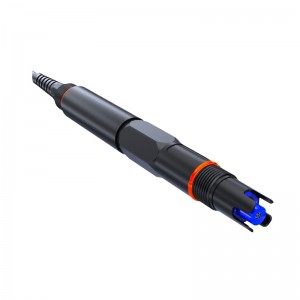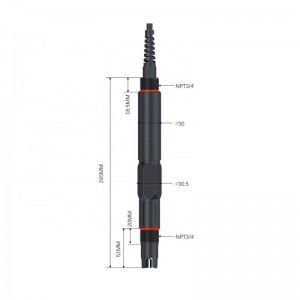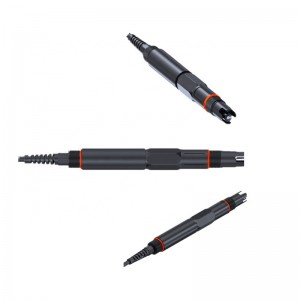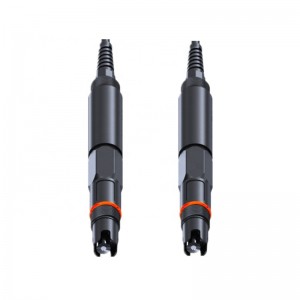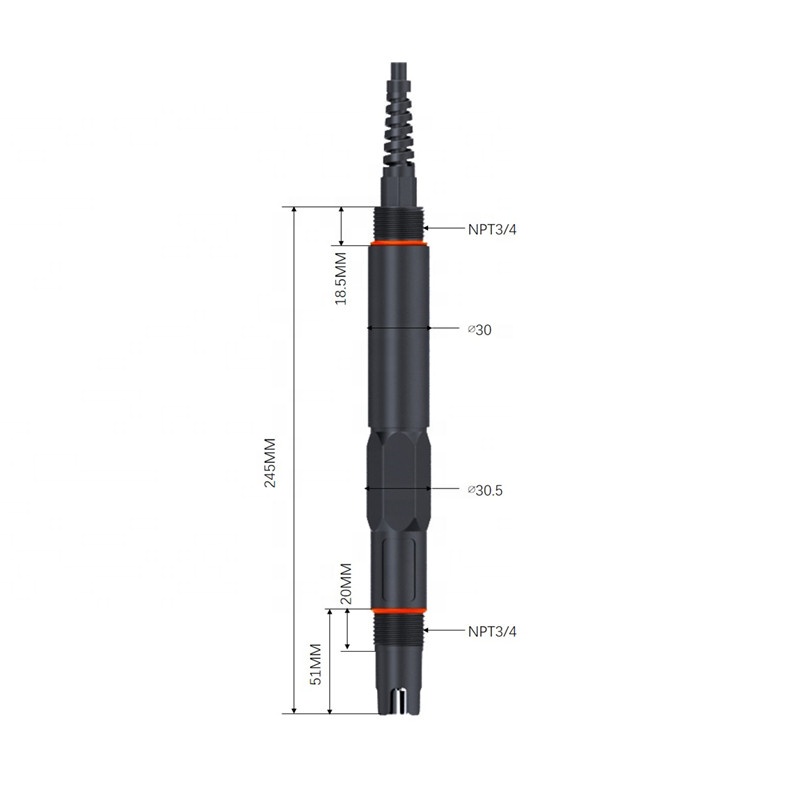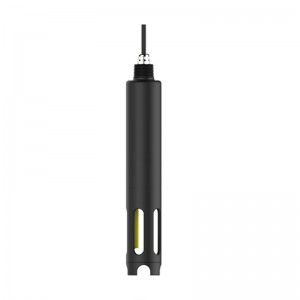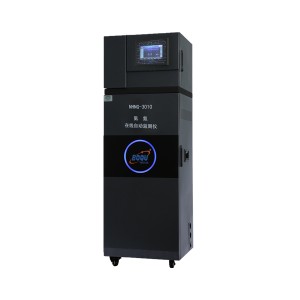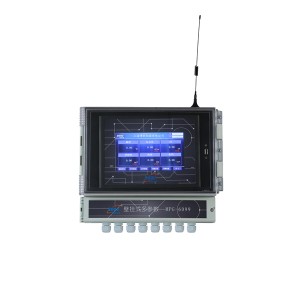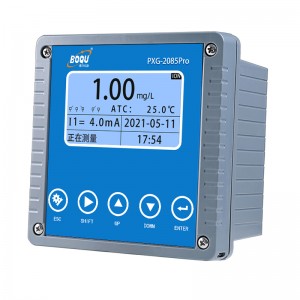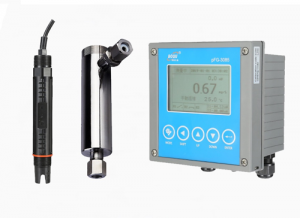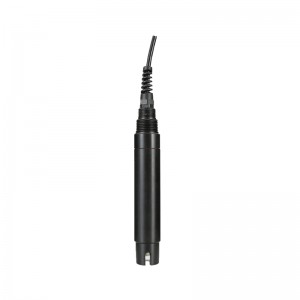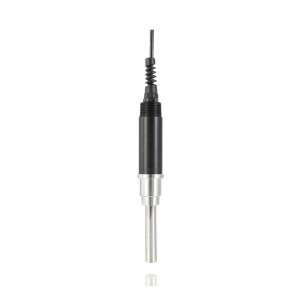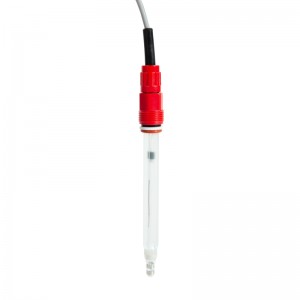Introduction
BH-485-ION is a digital ion sensor with RS485 communication and standard Modbus protocol. Housing material is corrosion-resistant (PPS+POM), IP68 protection, suitable for most water quality monitoring environments;This online ion sensor uses an industrial-grade composite electrode, the reference electrode double salt bridge design and have longer working life;Built-in temperature sensor and compensation algorithm, high precision; It has been widely used in domestic and foreign scientific research institutions, chemical production, agricultural fertilizer, and organic wastewater industries. It is used for the detection of general sewage, waste water and surface water. It can be installed in sink or flow tank.
Technical Specification
|
Model |
BH-485-ION Digital Ion Sensor |
|
Ions type |
F-,Cl-,Ca2+,NO3-,NH4+,K+ |
|
Range |
0.02-1000ppm(mg/L) |
|
Resolution |
0.01mg/L |
|
Power |
12V (customized for 5V,24VDC) |
|
Slope |
52~59mV/25℃ |
|
Accuracy |
<±2% 25℃ |
|
Response time |
<60s (90% right value) |
|
Communication |
Standard RS485 Modbus |
|
Temperature compensation |
PT1000 |
|
Dimension |
D:30mm L:250mm, cable:3meters(it can be extended) |
|
Working environment |
0~45℃ , 0~2bar |
Reference Ion
|
Ion Type |
Formula |
Interfering ion |
|
Fluoride ion |
F- |
OH- |
|
Chloride ion |
Cl- |
CN-,Br,I-,OH-,S2- |
|
Calcium ion |
Ca2+ |
Pb2+,Hg2+,Si2+,Fe2+,Cu2+,Ni2+,NH3,Na+,Li+,Tris+,K+,Ba+,Zn2+,Mg2+ |
|
Nitrate |
NO3- |
CIO4-,I-,CIO3-,F- |
|
Ammonium ion |
NH4+ |
K+,Na+ |
|
Potassium |
K+ |
Cs+,NH4+,Tl+,H+,Ag+,Tris+,Li+,Na+ |
Sensor Dimension
Calibration Steps
1.Connect the digital ion electrode to the transmitter or PC;
2. Open the instrument calibration menu or test software menu;
3.Rinse the ammonium electrode with pure water, absorb the water with a paper towel, and put the electrode into a 10ppm standard solution, turn on the magnetic stirrer and stir evenly at a constant speed, and wait for about 8 minutes for the data to stabilize (so-called stability: potential fluctuation ≤0.5mV/ min), record the value (E1)
4.Rinse the electrode with pure water, absorb the water with a paper towel, and put the electrode into the 100ppm standard solution, turn on the magnetic stirrer and stir evenly at a constant speed, and wait for about 8 minutes for the data to stabilize (so-called stability: potential fluctuation ≤0.5mV/ min), record the value (E2)
5.The difference between the two values (E2-E1) is the slope of the electrode, which is about 52~59mV (25℃).
Trouble Shooting
If the slope of ammonium ion electrode is not within the range described above, perform the following operations:
1. Prepare a newly prepared standard solution.
2. Clean the electrode
3. Repeat the "electrode operation calibration" again.
If the electrode is still unqualified after performing the above operations, please contact After-service Department of BOQU Instrument.

